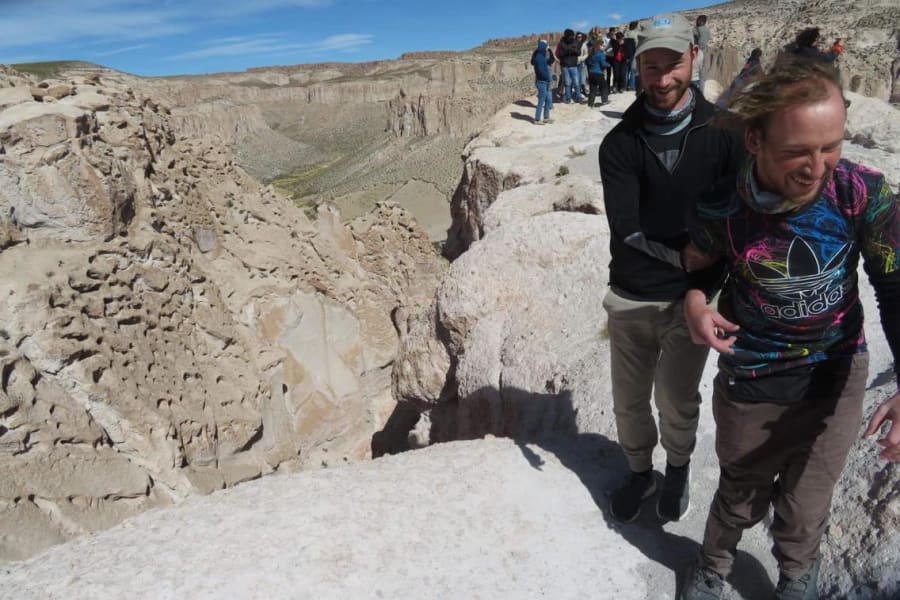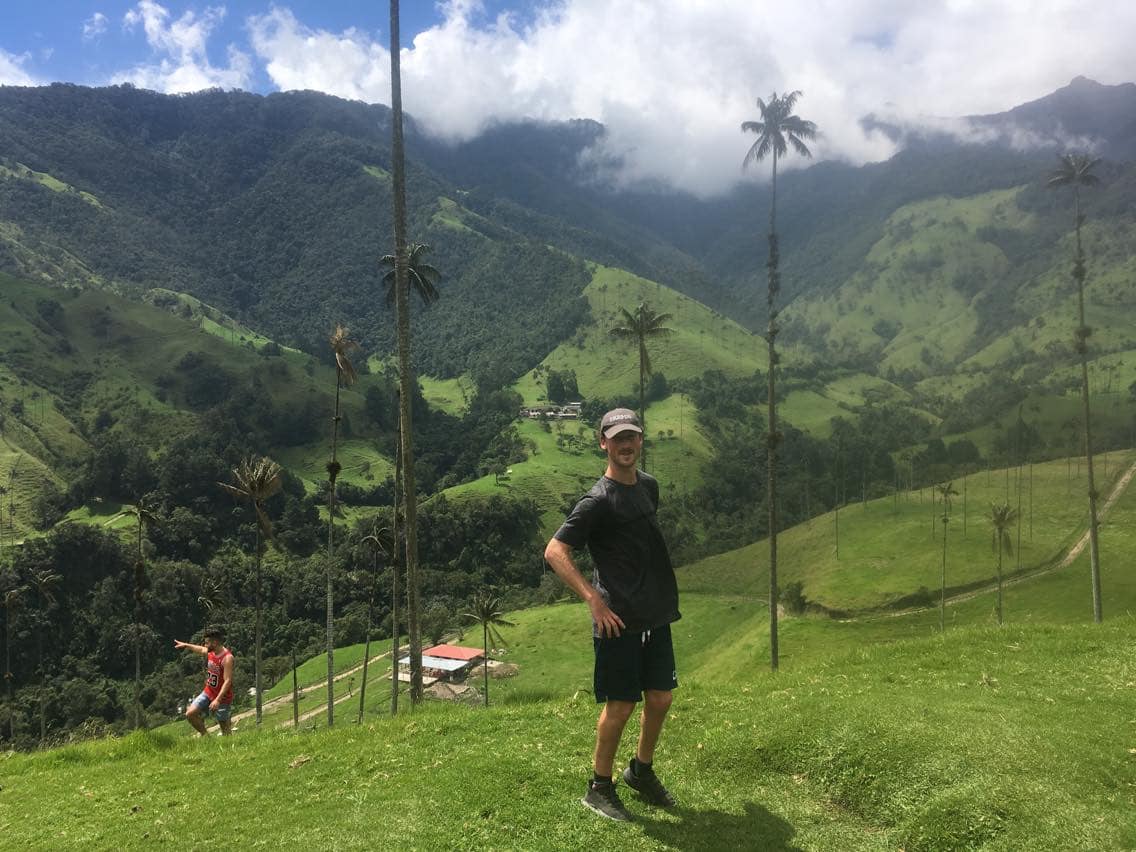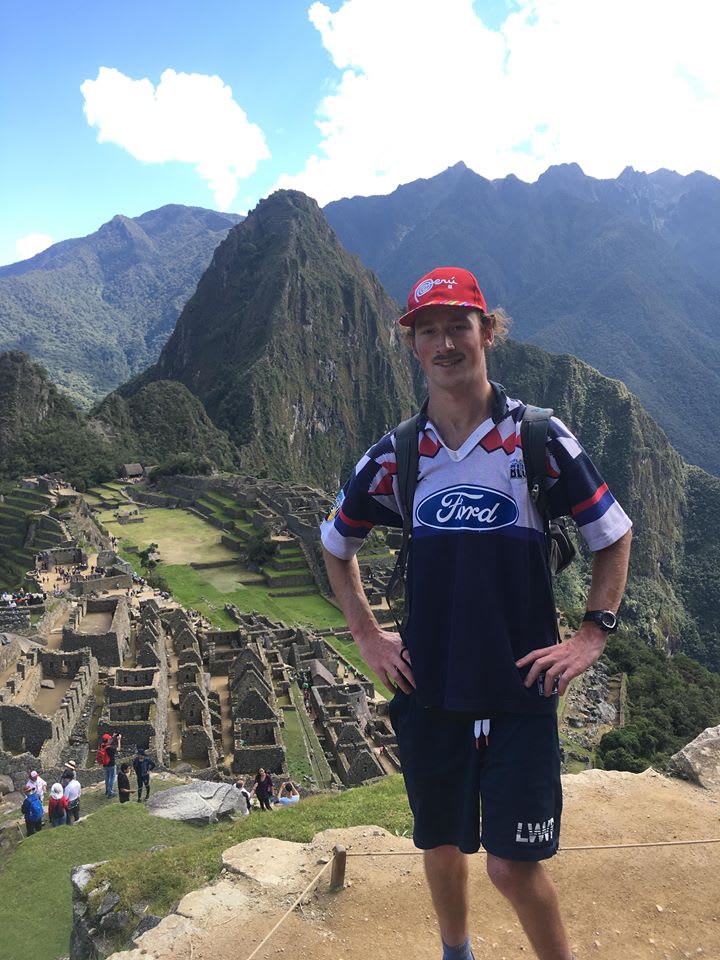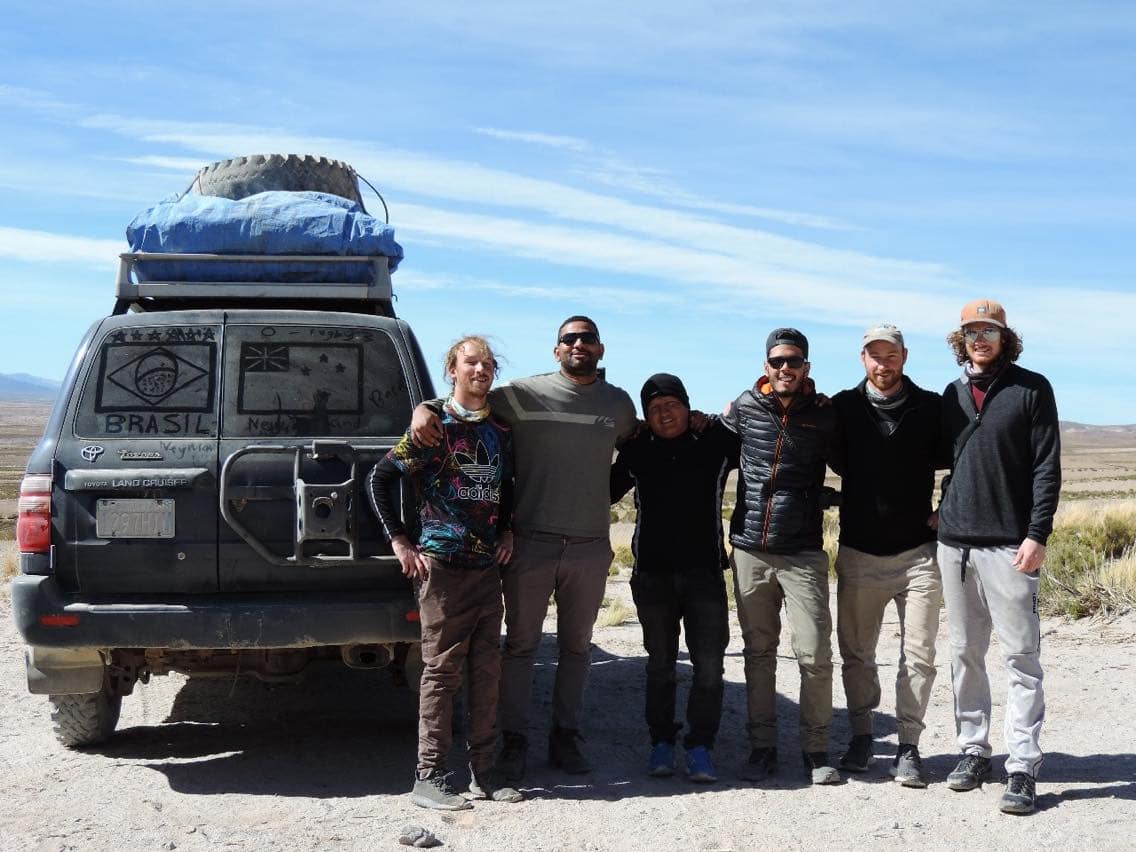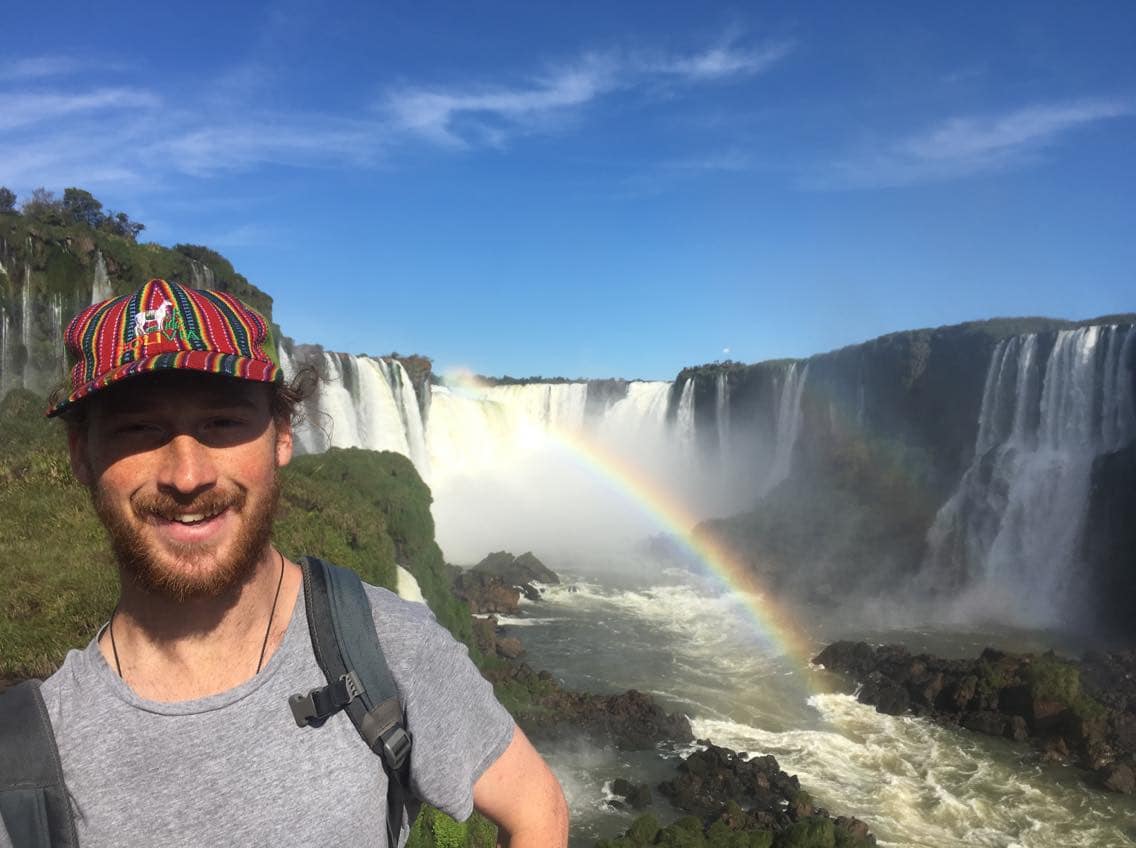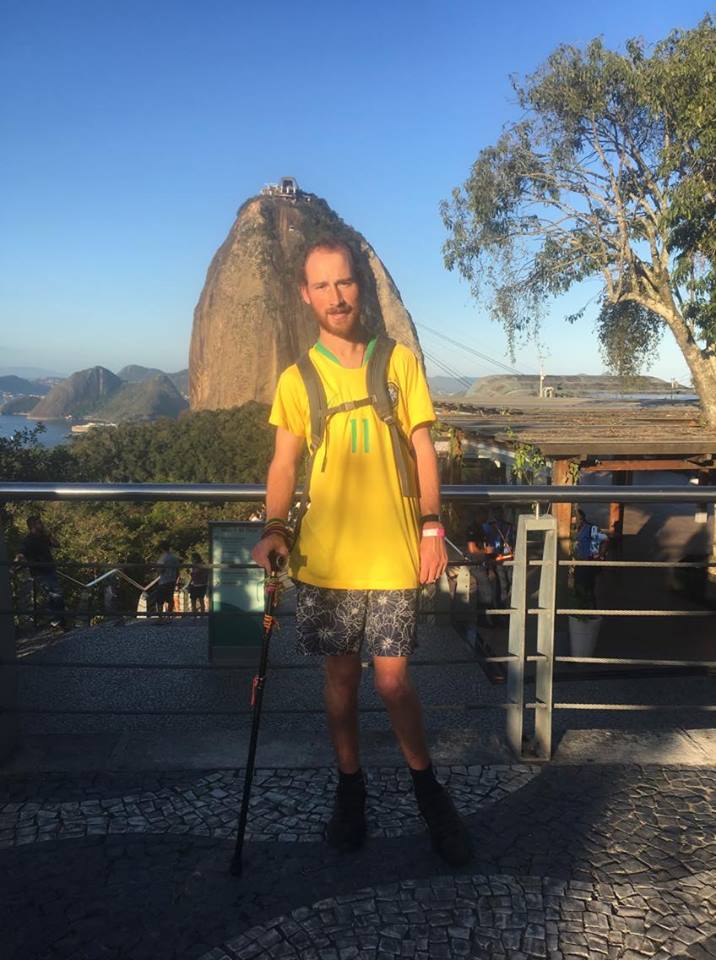And this experience completely changed my perception of South America.
Kia Ora, my name is George!
I’m a 22 year old New Zealander from a family of six living in a small rural area of Pahiatua, New Zealand.
I have cerebral palsy, or more precisely, spastic quadriplegia, which means I have cerebral palsy in all four limbs.
You may be mistaken for drunk even when you are not.
I love life and I love traveling, so I go at my own pace.
My twin brother, Edward, and I backpacked through Europe for three months and visited parts of Asia and India with my family.
So travel is in my family’s blood.
After graduating from college, I was determined to conquer South America – not with Ed, my other two brothers, or my parents, but alone!
Not many New Zealanders travel to Latin America alone, and friends and family were initially surprised that George would struggle, especially physically.
To be honest, I was nervous and emotional leaving my family behind, but my outlook on life is “anything is possible” and I want to prove people wrong.
We wanted to prove that people with disabilities can travel safely.
My six-month journey included a month-long TEFL course in Cusco, a volunteer hostel job in Ecuador, and a teaching job in Brazil.
I have visited the following 9 countries:
Peru
Ecuador
Columbia
Chile
Bolivia
Paraguay
Argentina
Brazil
Uruguay
From a Paraguayan local offering to tie my shoelaces in Asuncion to the moments I skipped countless lines at places like Sugar Loaf Mountain in Rio, here is a roundup of some of these amazing encounters.
An unforgettable moment for me was when I crossed the Chilean-Bolivian border. After getting my passport stamped and transferring to a jeep on the way to the Uyuni Salt Flats, I left my walking stick in the van.
It wasn’t until two days later that I realized I’d lost my walking stick. Not a big deal, but what happened after made it a special moment. After three days on the salt flats, we arrived at the tour guide’s office in Uyuni.
They handed me a package and I couldn’t believe what was inside – it contained my walking stick. It was a surprise.
This would never happen in my country, but even though I was in a foreign country with a language barrier, they were kind enough to return the stick to me.
This proves how honest people can be towards people travelling with a disability.
While checking in on my flight from Pereira to Cartagena, I was followed onto the plane by two older women in wheelchairs, who also gave me a seat at the front of the plane so we could depart earlier.
Throughout my trip, there were many times when local people offered me a hand when I lost my balance on uneven terrain.
One example is a day trekking tour around the Machu Picchu ruins.
The stairs were steep and uneven in many places and there was no way I could have climbed them on my own. The Peruvians on site were very patient and helped stabilize me as I climbed the stairs.
Ivan, our guide for the salt flats tour, was also very patient as he led us over rocky terrain to the countless lakes. We also got free admission to Cactus Island in the Uyuni Salt Flats, but I was surprised when a Spanish-speaking local refunded the fee when I offered to pay it.
Another example of free admission that I was impressed with was the Argentine side of Iguazu Falls.
I got off the bus and walked to the ticket booth, a staff member came up to me and asked if I had a disability ID card and said “Come here” I went to another booth and after they verified my ID card I was allowed in for free.
But that’s not all – in Iguazu Algy we were even given a small cart to help ease our feet as we walked around Muy Grande Park. At one point carts were not available and we were given a private car. We were also surprised at how accessible it was for people with physical disabilities, with a large ramp that was wheelchair accessible.
Skip-the-line entry is a wonderful privilege that all travelers with disabilities should take advantage of. I arrived at Rio de Janeiro’s Azucar (sugar) bread mountain in the late afternoon and there were hundreds of people in line.
It took us 5 minutes to be directed to the disabled lane, purchase our discounted tickets, and board the gondola for our departure, where we were able to see a gorgeous sunset over the Christ the Redeemer statue that others in line may have missed.
I was surprised countless times by unexpected kindness, like people offering up their seat for me on the Medellin subway or carrying my bag to the bus.
Or the time I bumped into a local on a quiet street in Asuncion. I thought he was a joker approaching a would-be robber, but he bent down to tie my shoelaces, a common occurrence.
I’m not one to climb onto the top bunk of a bunk bed, so I was happy that none of the hostels I’ve stayed in have ever let me climb onto the top bunk. At Habemus Hostel in Montevideo, the kind owner arranged for me to have a bed in the volunteer’s room so I didn’t have to climb the stairs.
If you ask me what memories I bring home from my time in South America, I would say it’s not the gringo places, paises (countries) or ciudades (cities) in particular, but the amazing people I met on the streets and in hostels, who remind me that the world is full of good people, and there are those who are there to help you when you least expect it.
To learn more about my travels, read my weekly blog and follow me on Instagram. Thank you!

